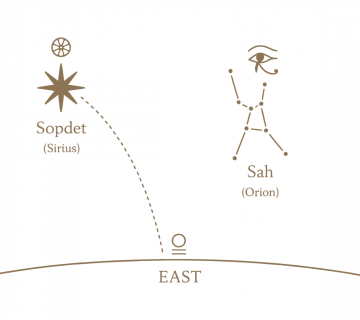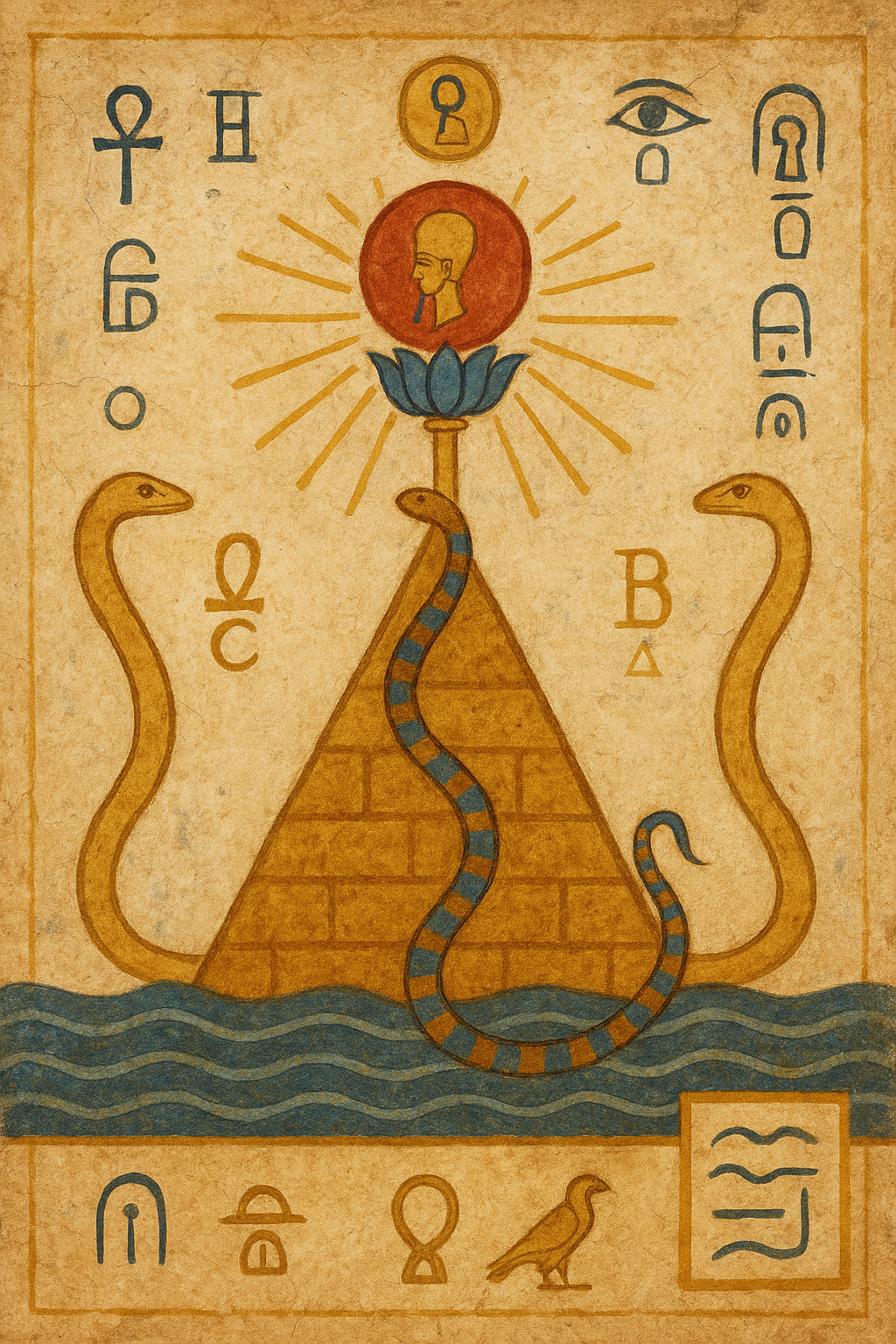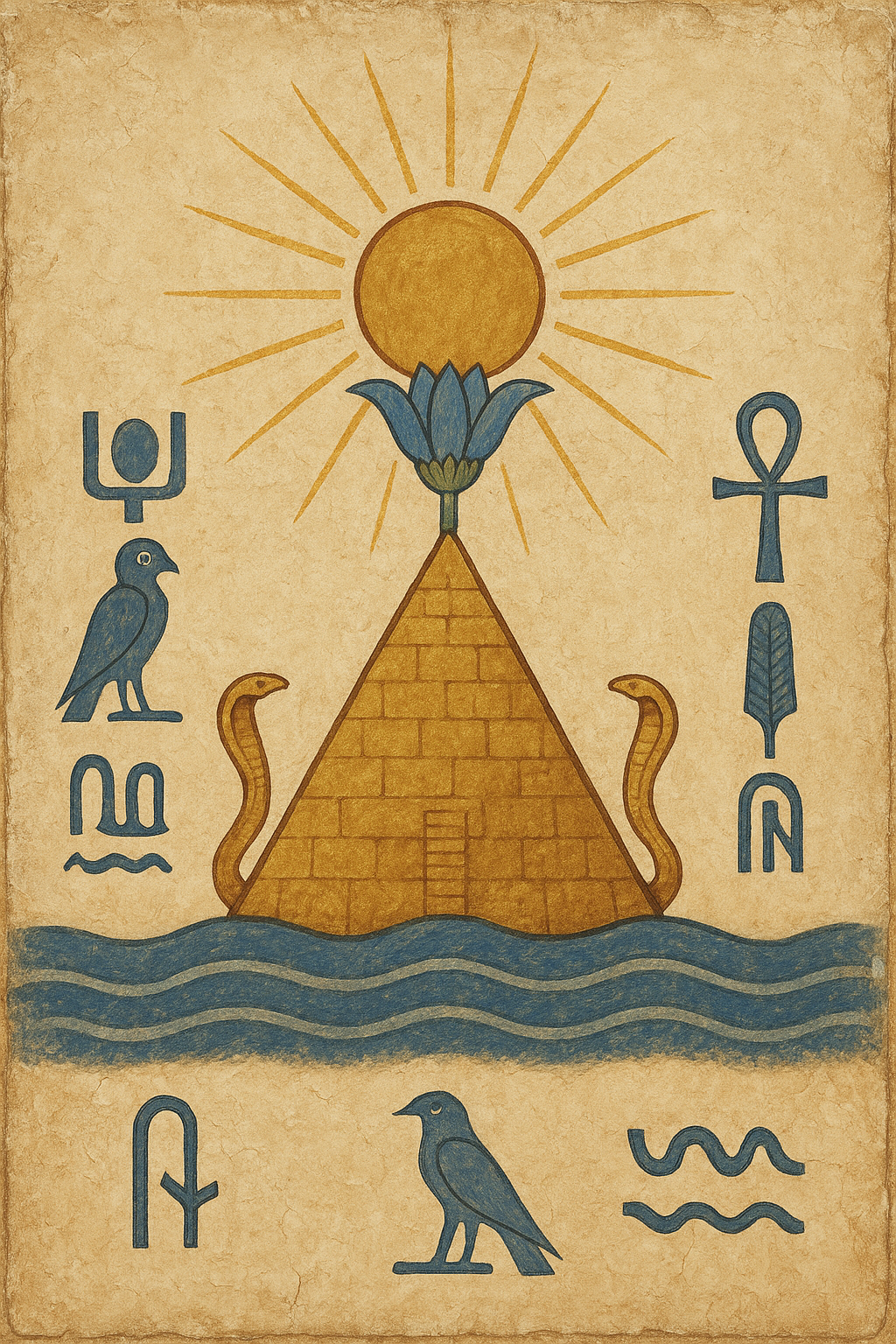The demise of the Pharaohs, as previously explored, marked not only a political transition but a spiritual rupture, the eclipse of a divine office once grounded in cosmic law, the heka of word and rite, and the direct embodiment of Ma’at. Yet sacred truths, once seeded into the matrix of creation, do not vanish. They may be veiled, hidden, encoded, but not destroyed. The initiatic role of the Pharaoh as divine steward, intermediary, and living Temple found its way into later traditions that, consciously or unconsciously, sought to preserve the essence of this sacred kingship.
This companion piece examines how the initiatic aspect of pharaonic authority endured beyond the fall of dynasties, through esoteric schools, spiritual lineages, and mystical traditions that continued to honor the Pharaoh not merely as a historical ruler, but as an archetype of awakened divine embodiment.
I. The Pharaoh as the Archetype of the God-King
The Pharaoh, in the ancient temples, was not simply a monarch; he was a living Neter, one who had undergone inner resurrection. He walked the path of Sa Ra—Son of Ra, not metaphorically, but initiatically. His Ka was ritually aligned with the solar principle, his Ba infused with the intelligence of Tehuti, and his name spoken in the Houses of Life with the same reverence as a constellation of the Duat.
In later centuries, this archetype found expression in adapted forms. Although no longer seated upon the throne of unified Kemet, the Mystery of Kingship echoed in the initiatory practices of esoteric brotherhoods, desert monastics, and gnostic sects who preserved veiled references to the “true king” as one who conquers the lower nature and reigns in the temple of the heart.
II. Hermeticism and the Transmission of Tehuti’s Science
During the Greco-Roman period, as the temples fell silent and papyri were hidden or burned, the initiatic teachings of Tehuti (Thoth) emerged under a new but recognizably linked mantle: Hermes Trismegistus. The Hermetic writings preserved fragments of the ancient gnosis, especially the sacred understanding of kingship as a spiritual process rather than a political title.
In texts such as the Corpus Hermeticum, one finds echoes of pharaonic ideology: the theme of man becoming divine through knowledge (gnosis), the emphasis on cosmic harmony, and the concept of ruling first over the self before presuming to guide others. The Hermetic adept is, in essence, a hidden Pharaoh, one who has reclaimed sovereignty over the self and participates in the maintenance of universal order.
III. The Initiatic Lineages and the “Hidden Pharaohs”
Though the outer throne fell, the inner throne, the seat of divine remembrance within the initiate was not extinguished. Several mystical traditions, particularly within the deserts of Egypt, Nubia, and later into the Maghreb and the Levant, carried forward this idea of the hidden king. These traditions often spoke of a righteous one, a guardian of balance, sometimes known as the Qutb (axis), whose presence ensured the world’s continuity, an echo, in mystical Islam, of the pharaonic concept of the king as cosmic stabilizer.
Moreover, in certain Coptic, Ethiopian, and Gnostic currents, there remained a memory often encrypted of the divine human as sovereign, as temple, and as living mediator between Heaven and Earth. These figures may not have worn crowns, but they bore the shemsu, the inner radiance of those who walk the solar path.
IV. Alchemy and Inner Kingship
The alchemical traditions that later flowered in both Islamic and European contexts can be seen as another tributary of the pharaonic current. The process of turning base metals into gold is but the external metaphor for the inner work of transmutation, the very path the Pharaoh walked in the temples of Denderah, Edfu, and Karnak.
The true Pharaoh underwent ritual death in the inner sanctum and arose crowned in the light of the Sahu body, immortal, luminous, and aligned with the stars. Alchemy preserved this memory, teaching that the real king is the one who reigns over fire, water, air, and earth not by force, but through alignment with the divine laws encoded in creation.
V. The Reawakening of the Pharaoh Within
Today, as the temples rise once again in remembrance, there is a resurgence of the ancient call—not to resurrect a political institution, but to awaken the Pharaoh within. This is the sacred work of those who walk the path of the Mystery Schools not in name only, but in deed and inner alignment.
To reclaim the initiatic role of the Pharaoh is to recognize oneself as a divine being tasked with the restoration of Ma’at in one’s sphere. It is to live by sacred measure, to speak with heka, and to become once again a living vessel of Ra’s light.
This is not nostalgia, it is resurgence. For in every age, when the sacred is remembered, the archetype of the true king returns—not upon the throne of empire, but upon the throne of the heart.
Conclusion: The Throne Beyond Time
The initiatic role of the Pharaoh endures because it was never contingent upon the outer structures of power. It was, and remains, a path of divine embodiment, a cosmic vocation that calls to the Ka of those who remember.
Though the statues may be broken and the crowns buried in sand, the Pharaoh yet walks among us—silent, veiled, and radiant—awaiting those who would once again step onto the path of inner kingship and restore the temple of the world through the temple of the self.


